How to Write a Return Policy For Your Website

Summary
The article also advises displaying the policy in accessible areas on the website and recommends using the WP Legal Pages plugin to create legal pages easily.
Are you running an eCommerce store with multiple products? If yes, then you must write a refund policy for your website.
Returns and refunds are a small part of doing business online.
A clear and simple return policy enhances the customer’s return experience. This leads to a positive impression of your store and builds trust.
In this guide, we will explain what a return policy is and why it is necessary. We will also show you how to write a return policy that is short, effective, and saves you time.
What is a Return Policy?
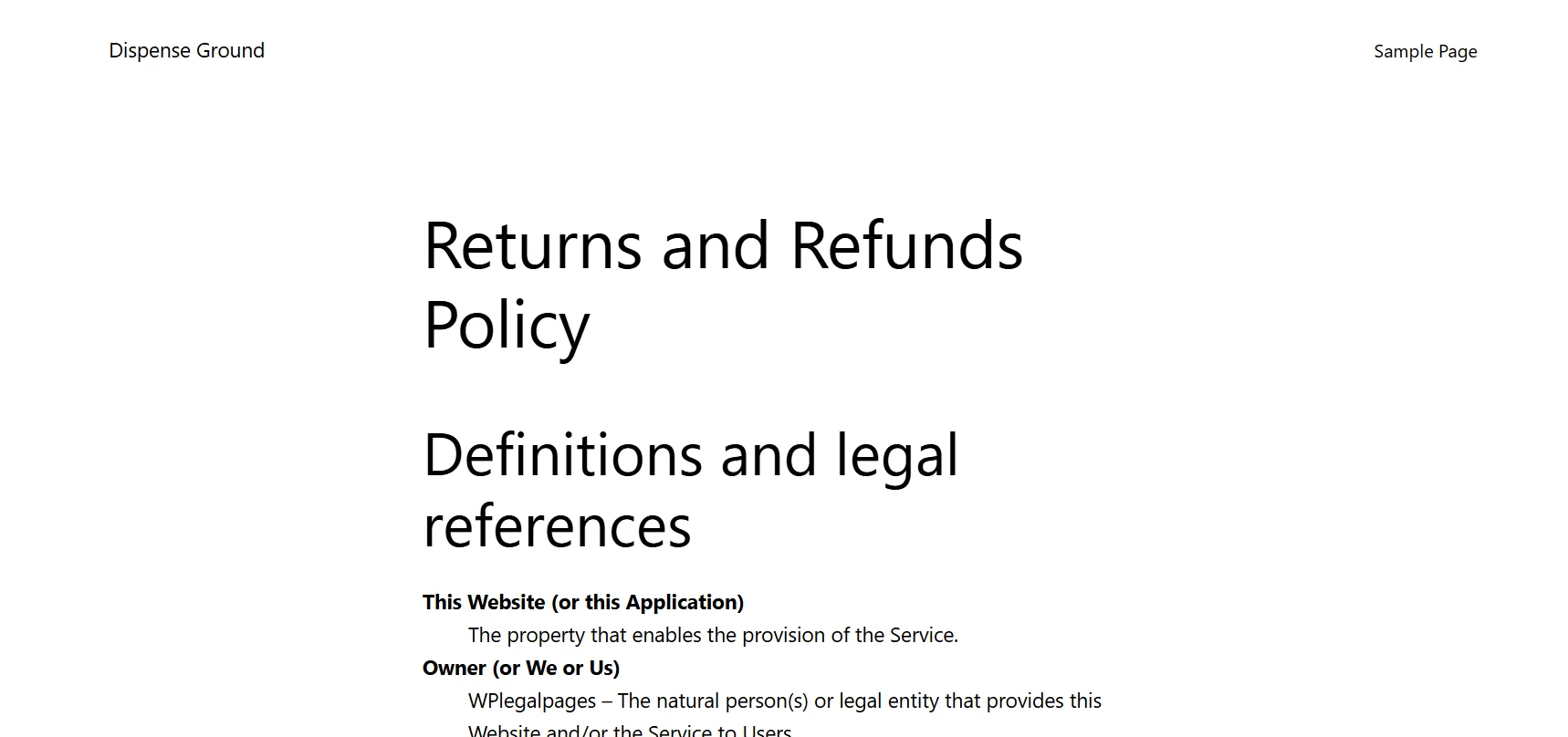
A Return and Refund Policy is a statement that clarifies whether your company accepts returns or refunds. It is also known as a return policy.
Your return and Refund Policy clarifies how your company handles return products or refunds. It also clarifies the terms and conditions for users to exchange or return products they have purchased online.
Returns happen when a customer returns an item to the vendor or seller, and refunds happen when the consumer is given their money back. A refund and return policy will also tell users when to accept the returns.
Importance of a Return Policy for Online Businesses
Return policies are essential to businesses as they establish proper customer expectations, protect your business from fraud, and make customers happy.
Following are some significant reasons why having a return policy for online business is essential.
Return Policies Establish Proper Customer Expectations
You need to craft a return policy that clearly sets your customers’ expectations regarding their options if they purchase something from you and are not satisfied.
Return policies define the exact conditions under which, when, and how customers can return goods.
Informing customers about policies before purchase prevents surprises.
Protection From Fraudulent Returns
A good return policy protects your business from fraudulent returns by establishing an efficient process that makes it easier to identify inappropriate or irregular refund requests.
In 2022, 10.7% of online returns were fraudulent (National Retail Federation).
The most common types of return fraud reported by companies were:
- 50% — wardrobing fraud, i.e., improperly returning used, non-defective products
- 41.4% — return of shoplifted or stolen merchandise
- 20% — Organized retail crime returns
Since your return policy is a binding contract between you and the customer, you can also add provisions to deny or sue for fraudulent returns.
Return Policies Enhance Customer Satisfaction
A clear return policy shows that you value your customers and prioritize their satisfaction with your products and services.
Since most individuals anticipate seeing a return policy on every ecommerce site or app, publishing one also makes you more legitimate and trustworthy in a customer’s mind.
If customers can’t find a return policy on your website, they can feel it’s too risky to buy from you.
In the next section, let’s check the step-by-step guide to write a Return policy for your website.
Step-by-Step Guide to Writing a Return Policy
This section will look at the step-by-step guide to writing a return policy for your website.
A straightforward return policy will build trust and provide customers with clear information about their returns. Whether you’re writing a return policy for an online business or a physical shop, every return policy should be considered to assure customer confidence.
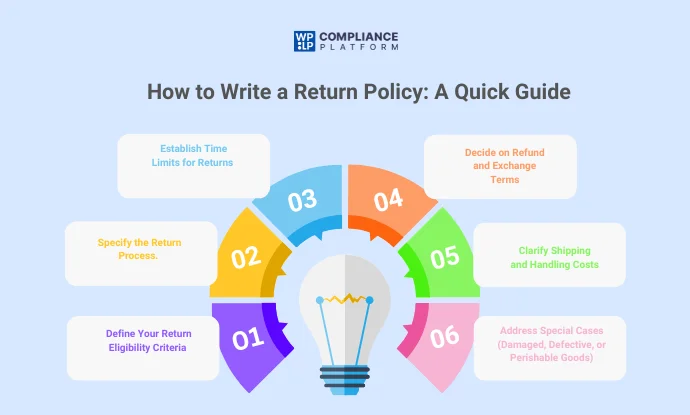
Step 1: Define Your Return Eligibility Criteria
Start by stating who would be qualified to return items. Example: state if all purchases are returnable or if there are goods that cannot be returned, such as perishable stuff.
Step 2: Specify the Return Process.
Return instructions must be straightforward. State the return address, the forms that must be filled out, and how your customer can contact you for assistance. A well-structured return policy template is vital to ensure everything is in order.
Step 3: Establish Time Limits for Returns
If desired, allow customers and the business to set the period for accepting returns. The popular time limit is 30 days, but other variations exist depending on the product.
Step 4: Decide on Refund and Exchange Terms
Clearly inform your customers whether they will receive a full refund, store credit, or an exchange for returns. Using a product return policy template helps maintain consistent communication.
Step 5: Clarify Shipping and Handling Costs
Clarify who pays for return shipping: will the customer pay it, or will the business take this expense? Also, indicate whether shipping fees will be refunded.
Step 6: Address Special Cases (Damaged, Defective, or Perishable Goods)
Decide how to deal with returns of damaged, defective, or personalized items. Your return policy should clarify how replacements or refunds will be made to avoid controversial issues.
By following the procedures mentioned above, one can develop a clear and compelling return policy template that protects your business while at the same time putting the check on their customers.
Here is Google Play‘s Return Policy Example that will Help You Understand better:
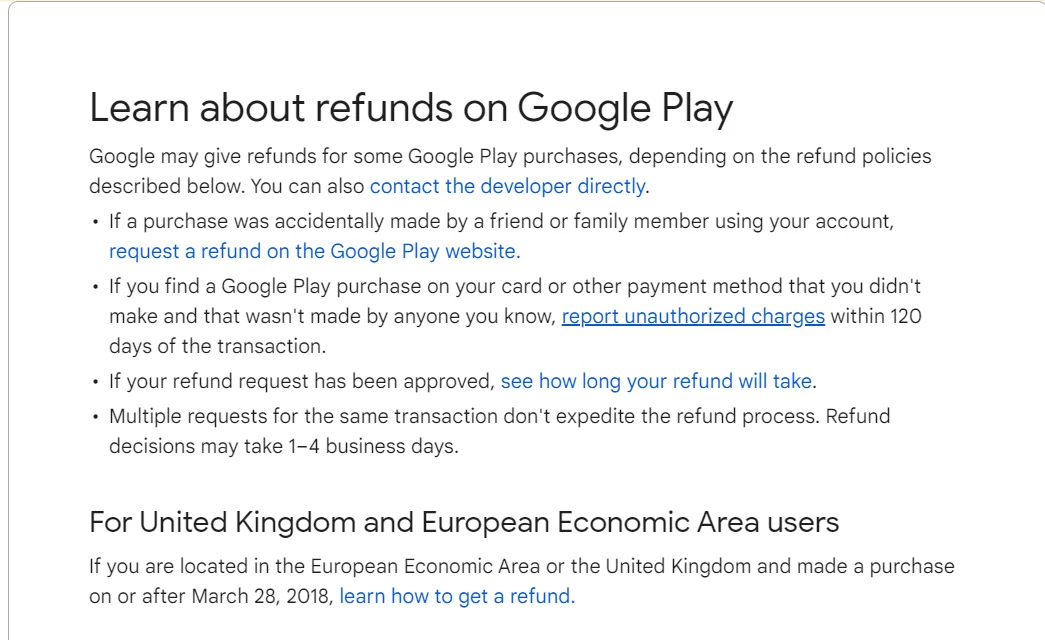
Google Play offers refunds for various transactions, such as accidental or involuntary purchases.
Users who buy applications or make in-app purchases can request a refund through Google Play within 48 hours of the transaction. Links and complete policy information are offered for refunds for different types of digital merchandise.
When you write a refund policy for your website, you can also outline the situations under which you will give refunds in your return policy, e.g., when the product is faulty or misrepresented.
Where Should You Display Your Return Policy?
Once you write a return policy, it is time to post it on the website. Make sure your return and refund policy is easily accessible to your customers.
The most common location for this is your website’s footer. However, it can also be placed under the terms and conditions policy or on the checkout page.
- Footer Of The Website: Legal links are generally found in the footer area of the websites. Adding a link to your Return and Refund Policy in your website’s footer is a good way to ensure visitors can find it on any page.
- Your Return and Refund Policies are included in your terms and conditions agreement. The document helps outline customers’ requirements for using your digital products or services.
- On a Checkout Page: You can include a link to your return and refund policy, as well as a checkbox to agree to the terms and conditions on the checkout page.
Now you know what to put in your return and refund policy and where to put it on the website.
How to Implement a Return Policy on Your WordPress Website
Reading this, one may ask how I write a refund policy for a WordPress website.
Using a privacy policy generator, you can generate a return policy for an online shop. The best and most time-saving method is to use a plugin.
WP Legal Pages plugin – Privacy Policy Generator

We recommend using the WP Legal Pages plugin to generate a refund policy and other legal pages for your website, such as terms and conditions, return and refund, and more.
WP Legal Pages is a free privacy policy generator that helps you quickly and conveniently create legal pages for your website.
The template saves you plenty of time by quickly writing a return policy that meets your business’s requirements.
Our objective is to write a return policy; let us see how we can create one for your website in the following steps.
Step 1: Installing WP Legal Pages Plugin
From your WordPress Dashboard, click on Plugins > Add New.
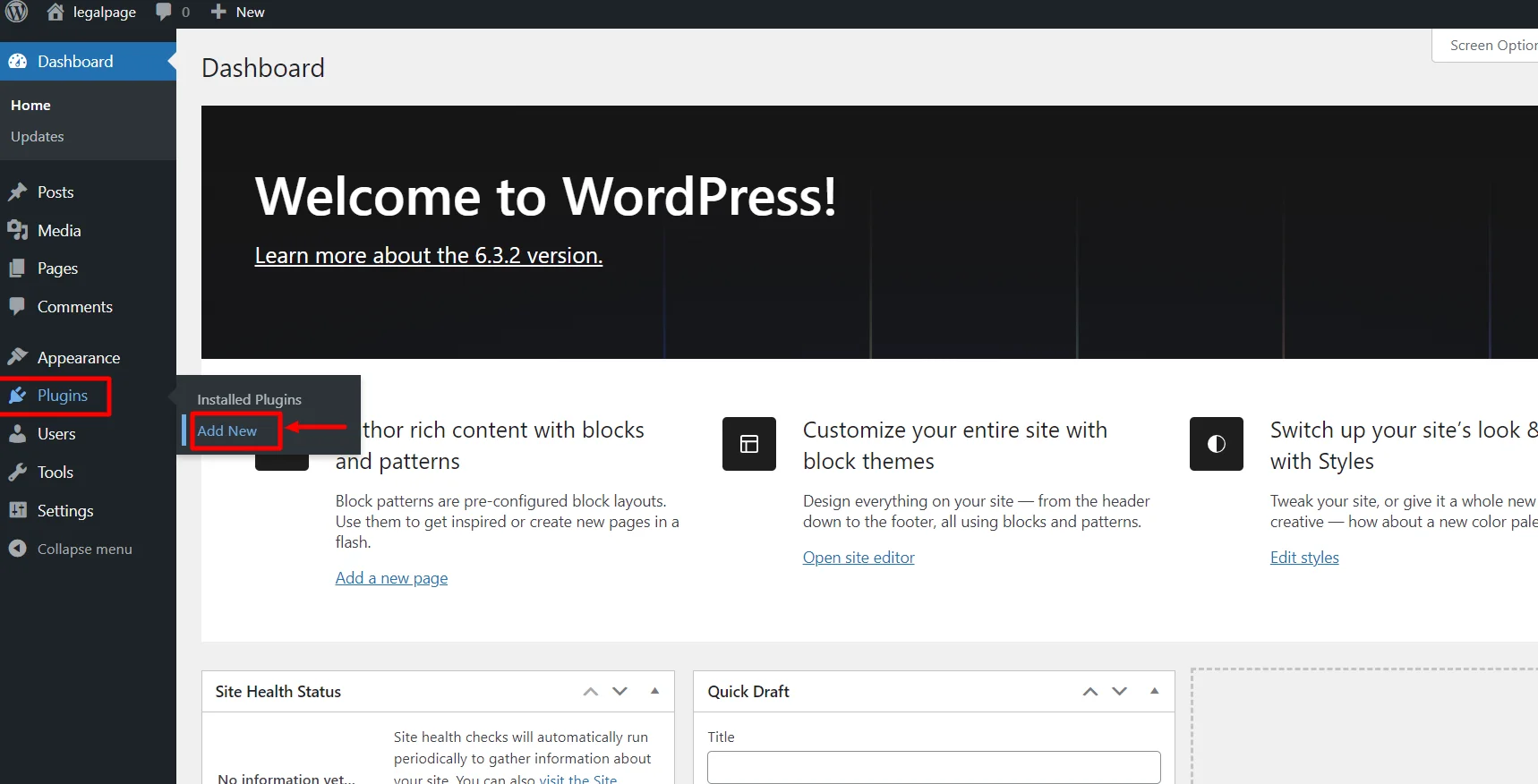
Search for WPLegalPages in the search bar.
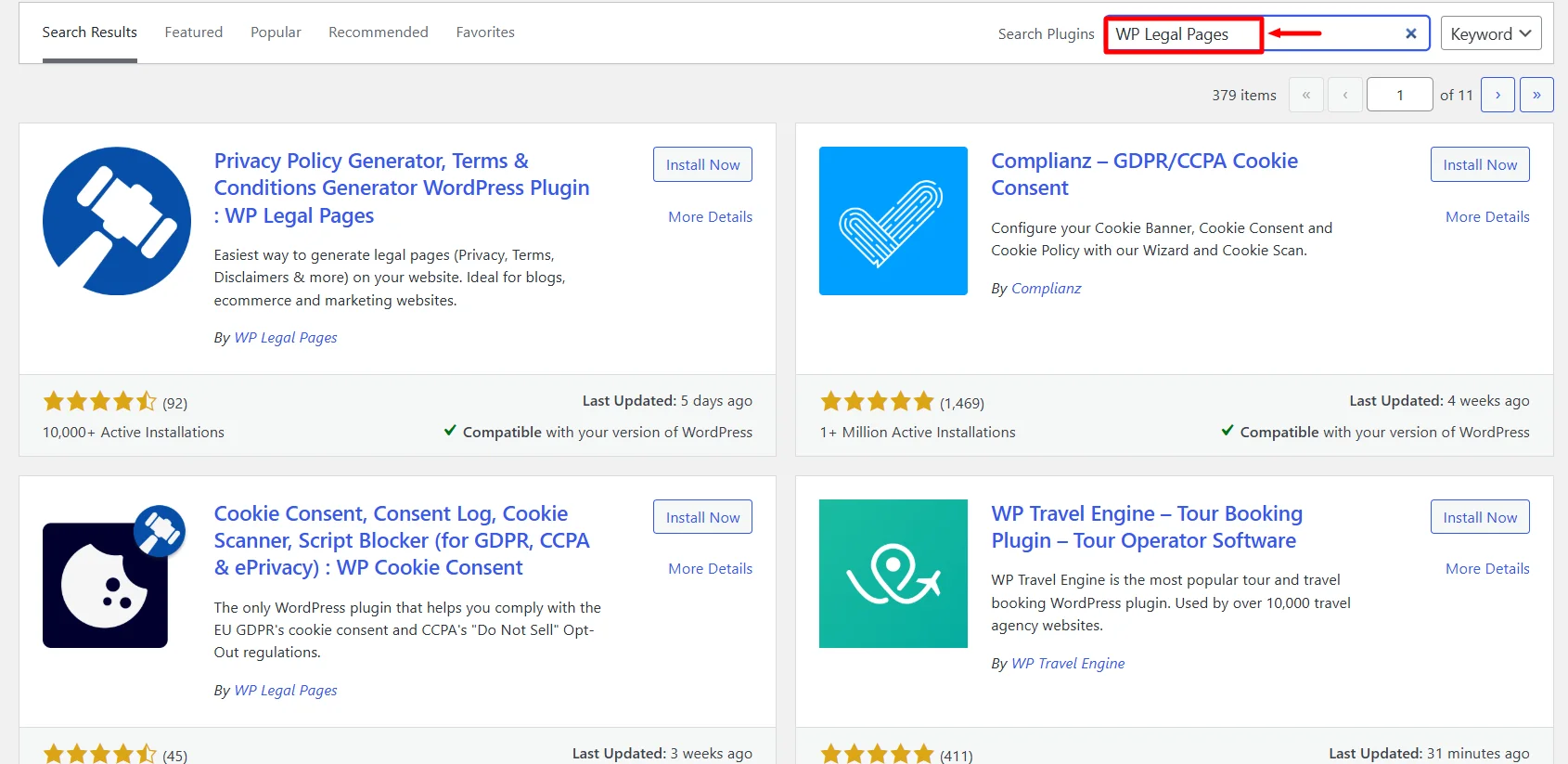
Click on the Install Now Button.
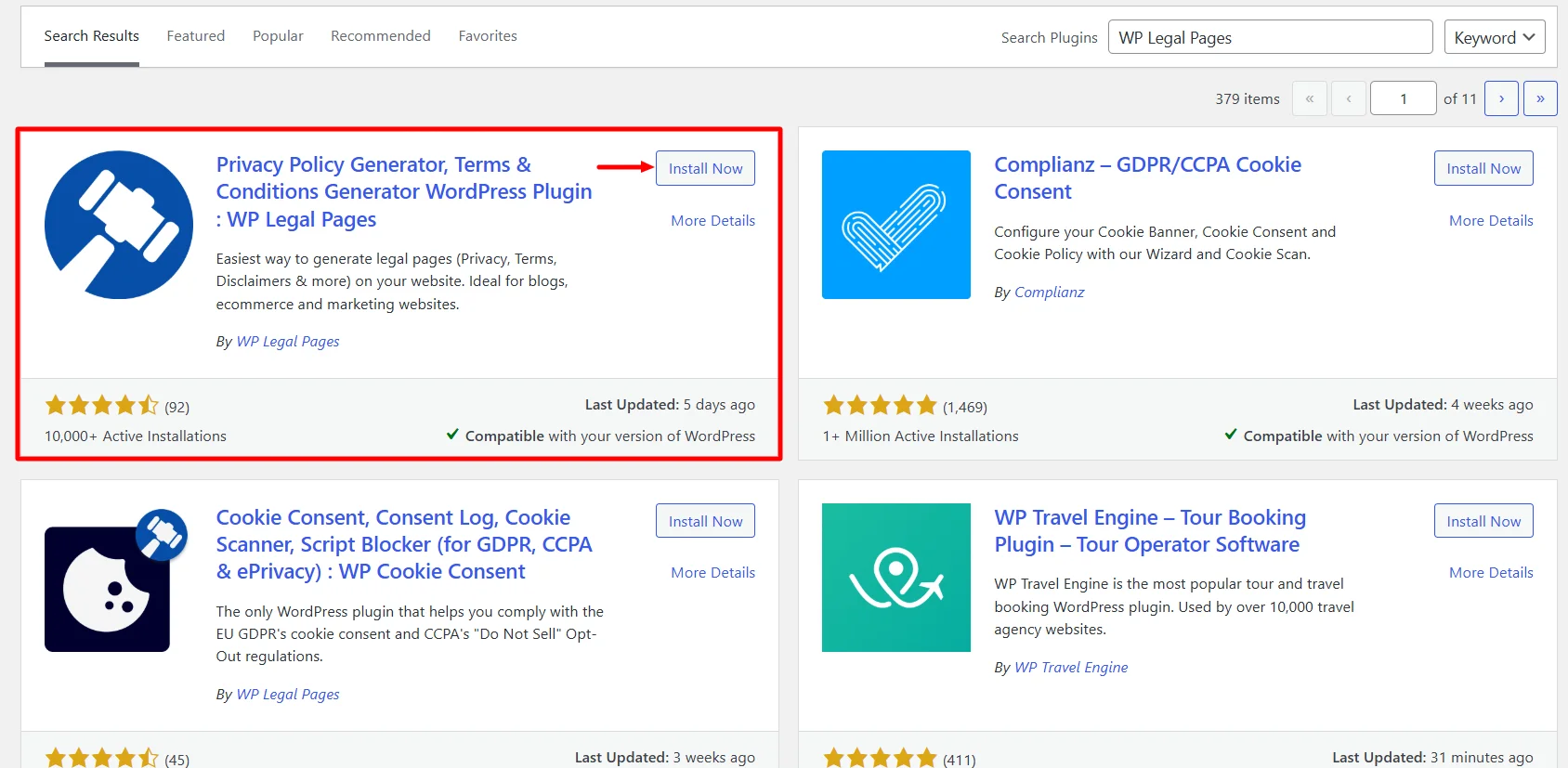
Activate the WP Legal Pages plugin by clicking the Activate button.
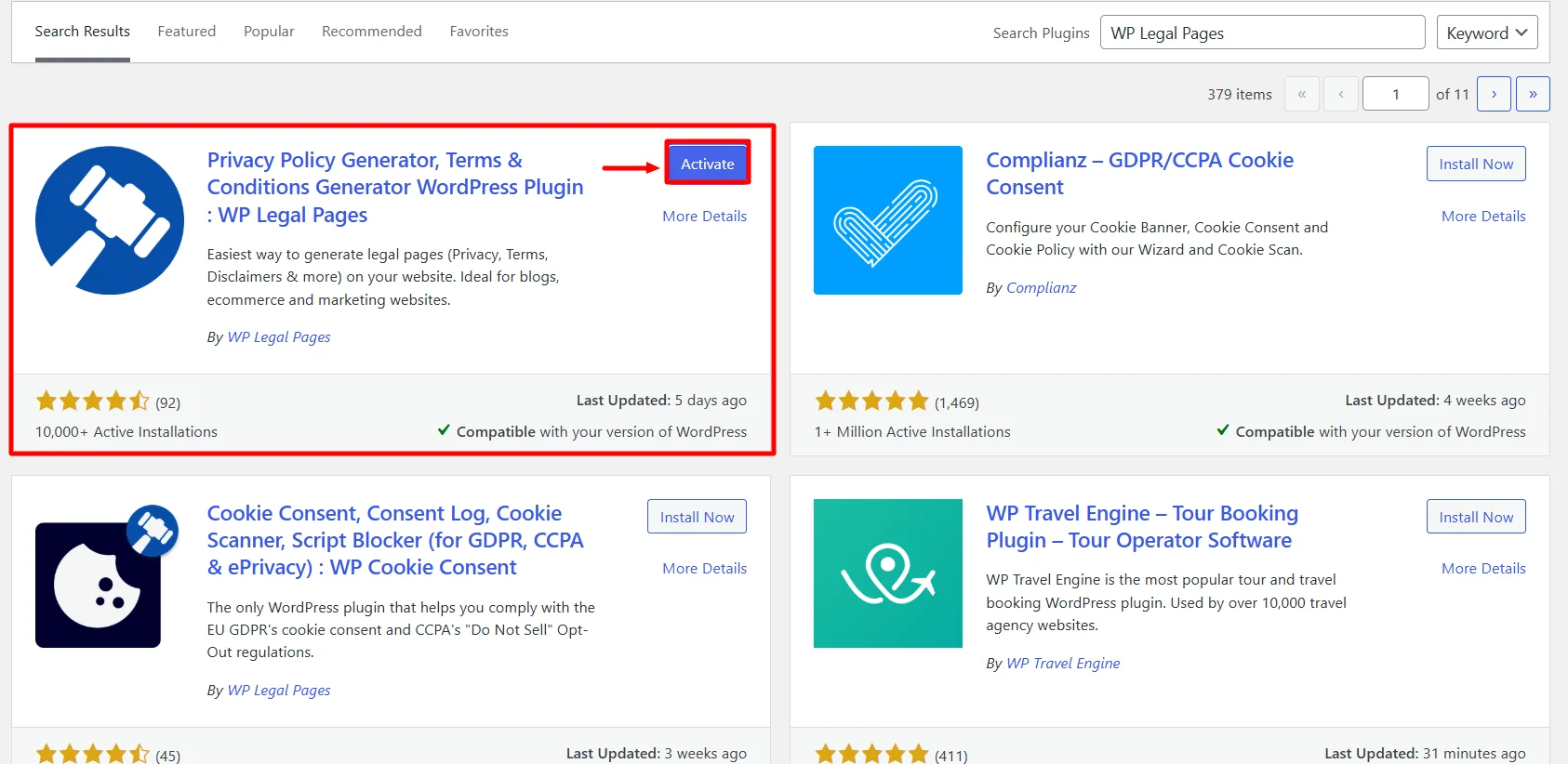
Step 2: Configuring WP Legal Pages Plugin
Once you have activated the plugin, you can access it directly from the Dashboard.
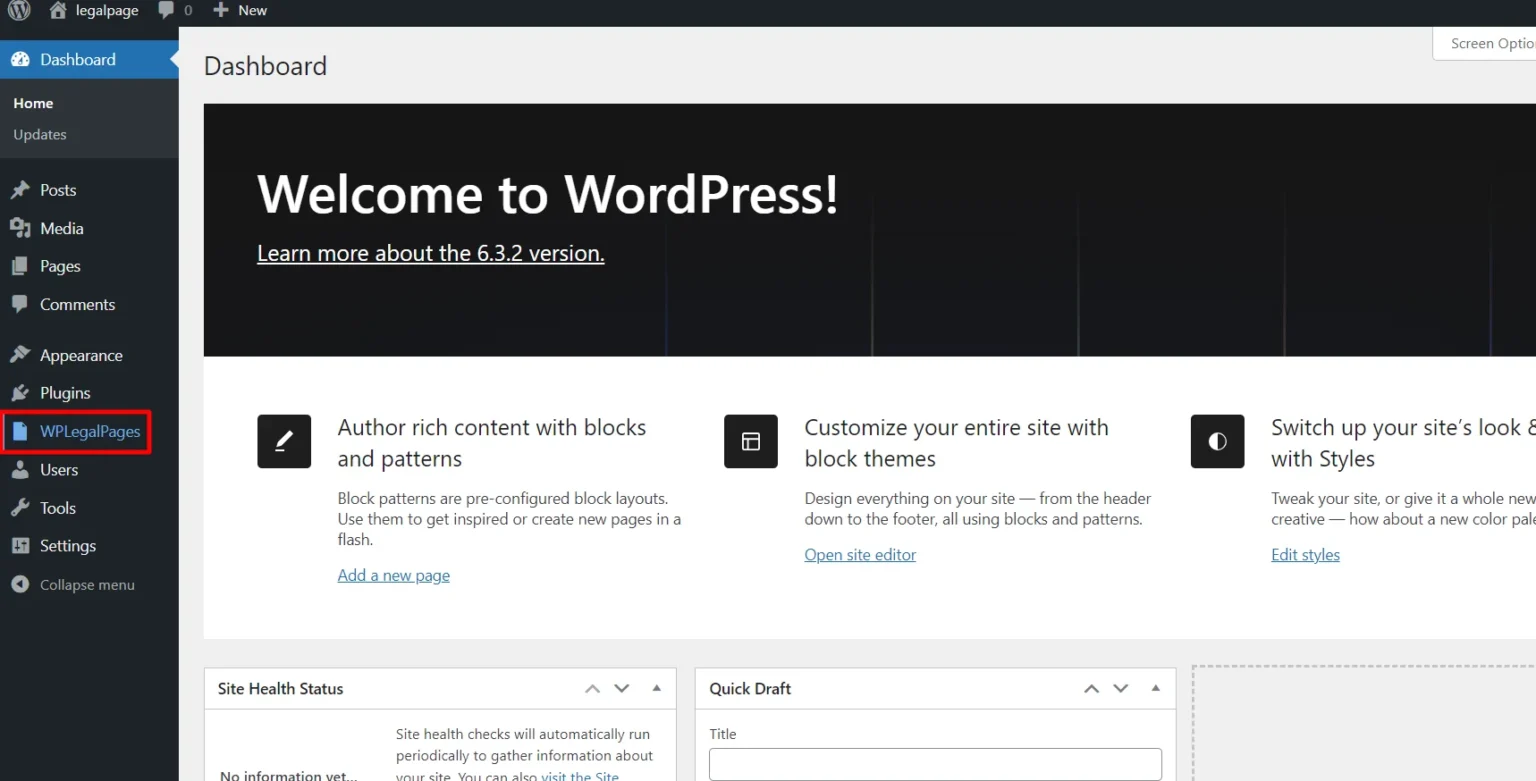
Next, Accept the terms of use of the WPLegalPages plugin.
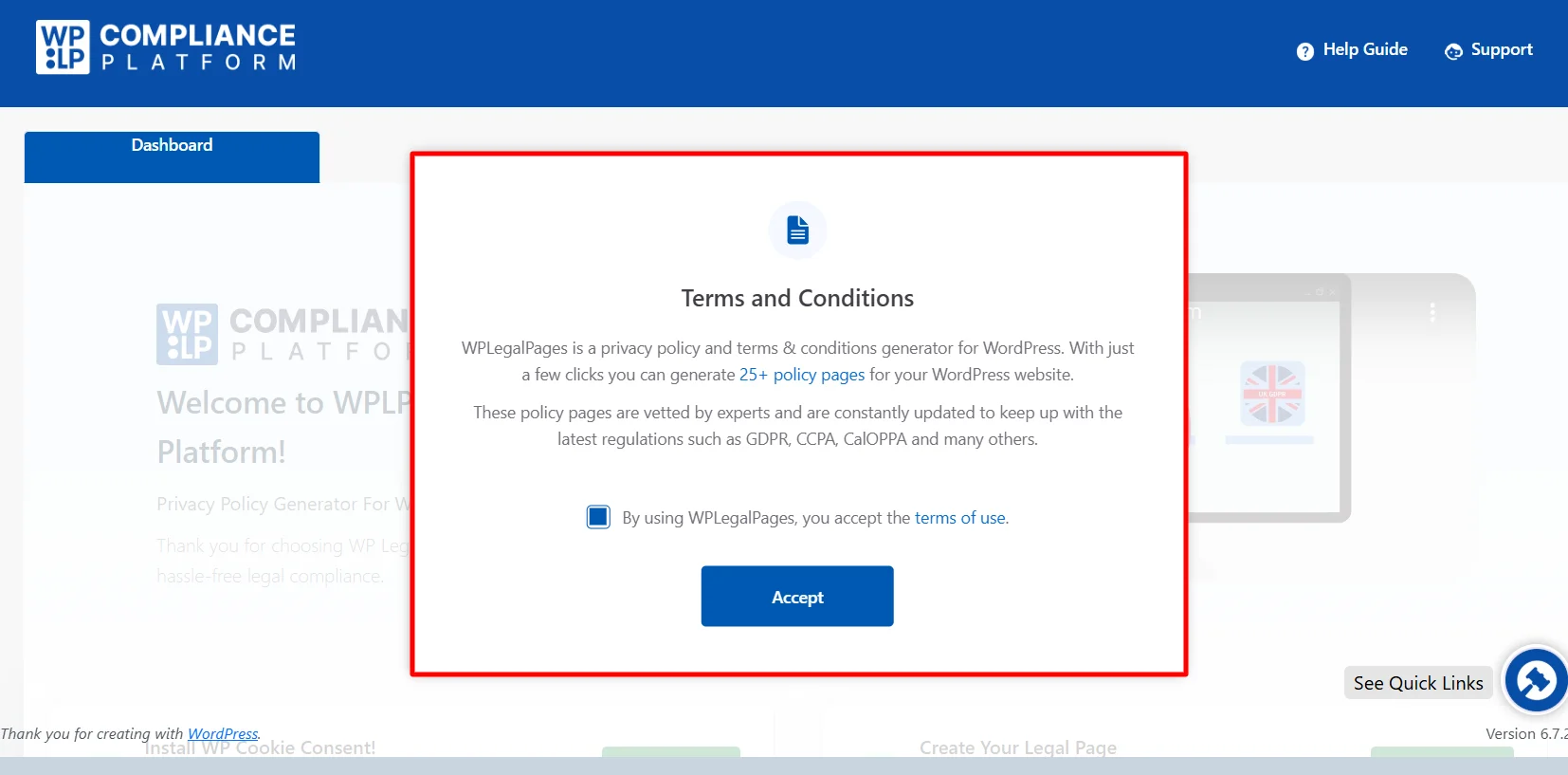
Step 3: Create an Account with WP Legal Pages Plugin
To generate legal pages for your website, scroll down from the dashboard and click Create Page.
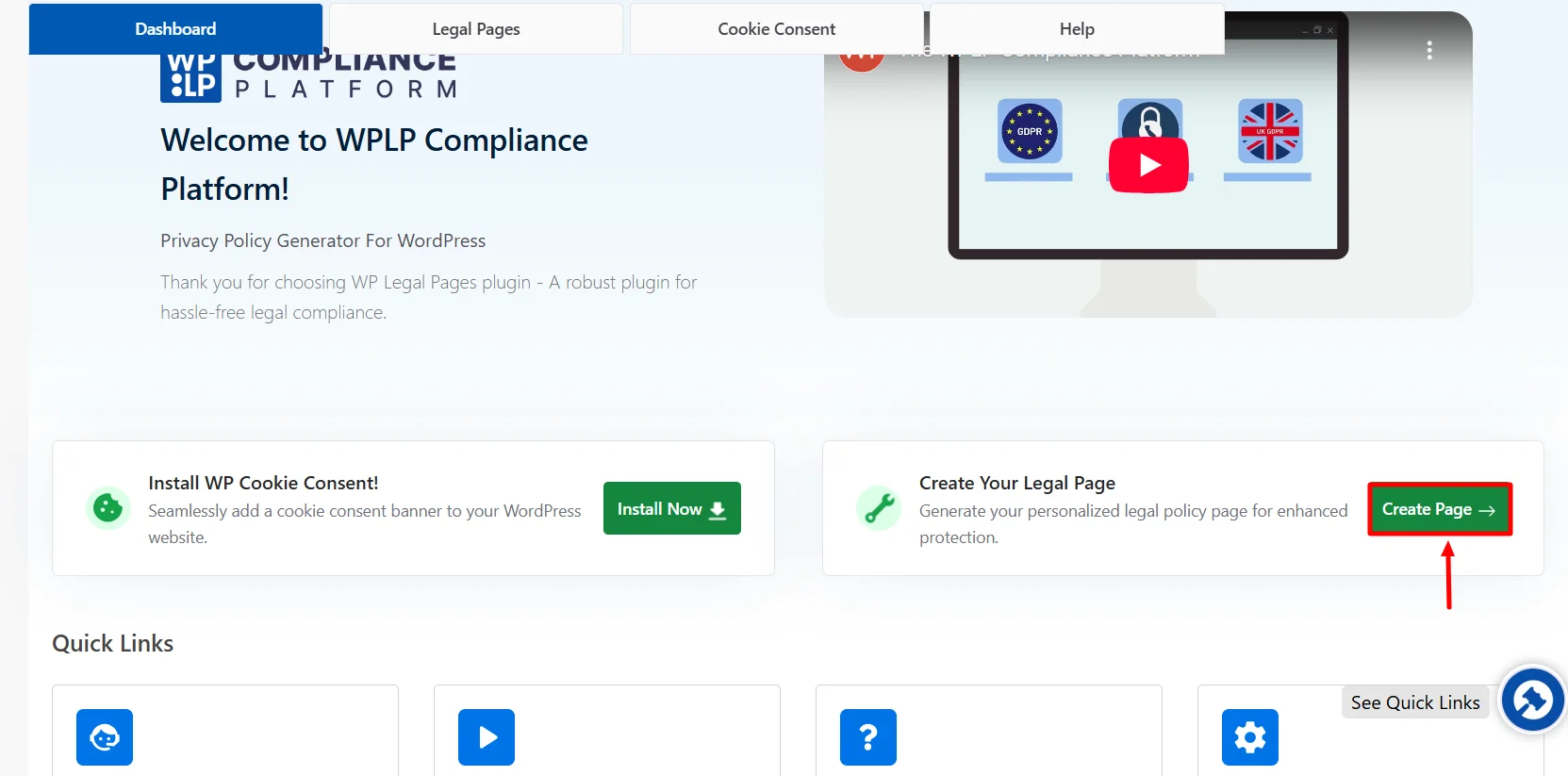
This will open the WP Legal Pages wizard. From the WP Legal Pages wizard, choose the Return Policy template and click the Create button.
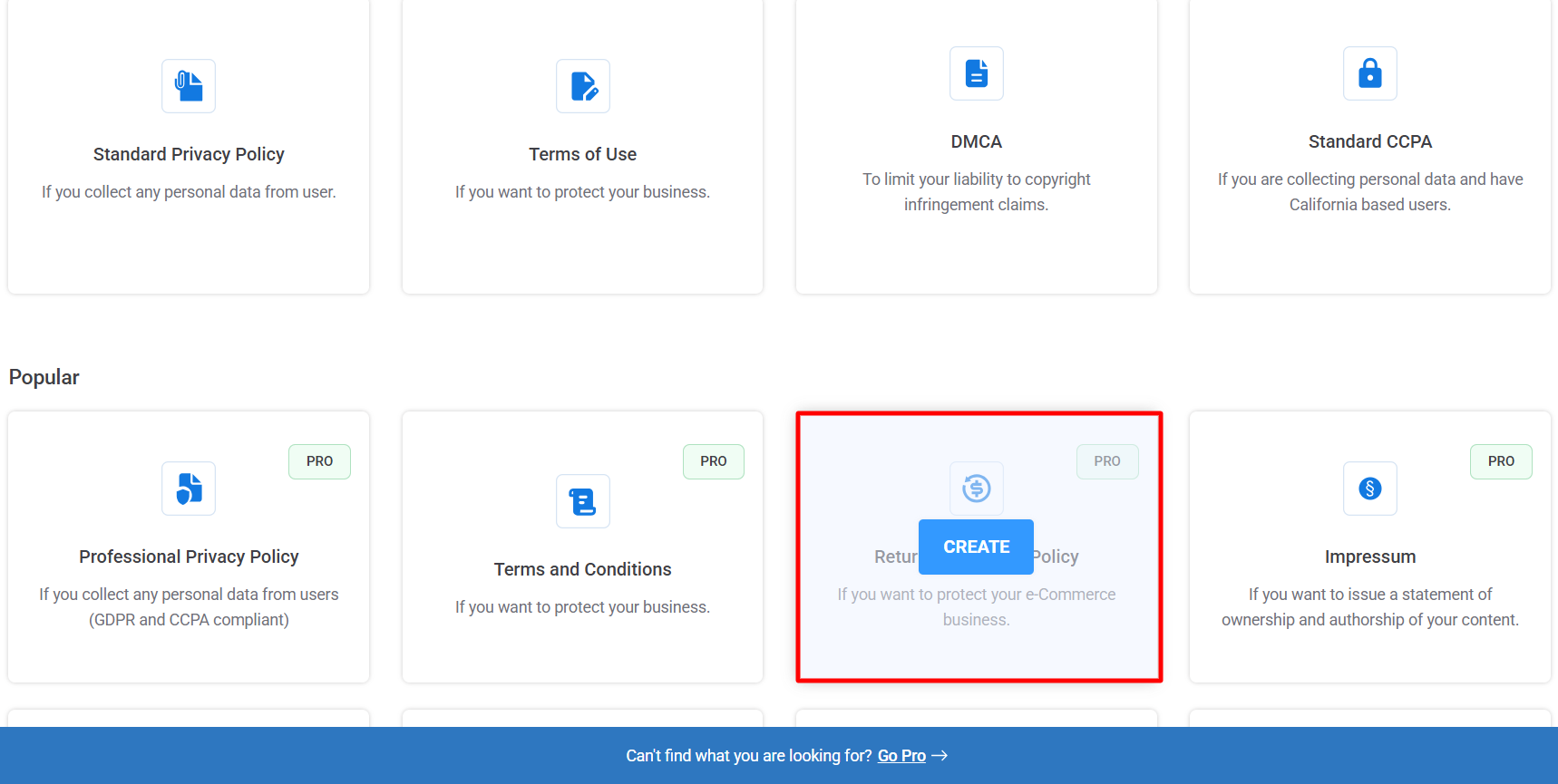
Note
Once you click Create, a pop-up will appear, asking you to create a new account. Click on New? Create an account.
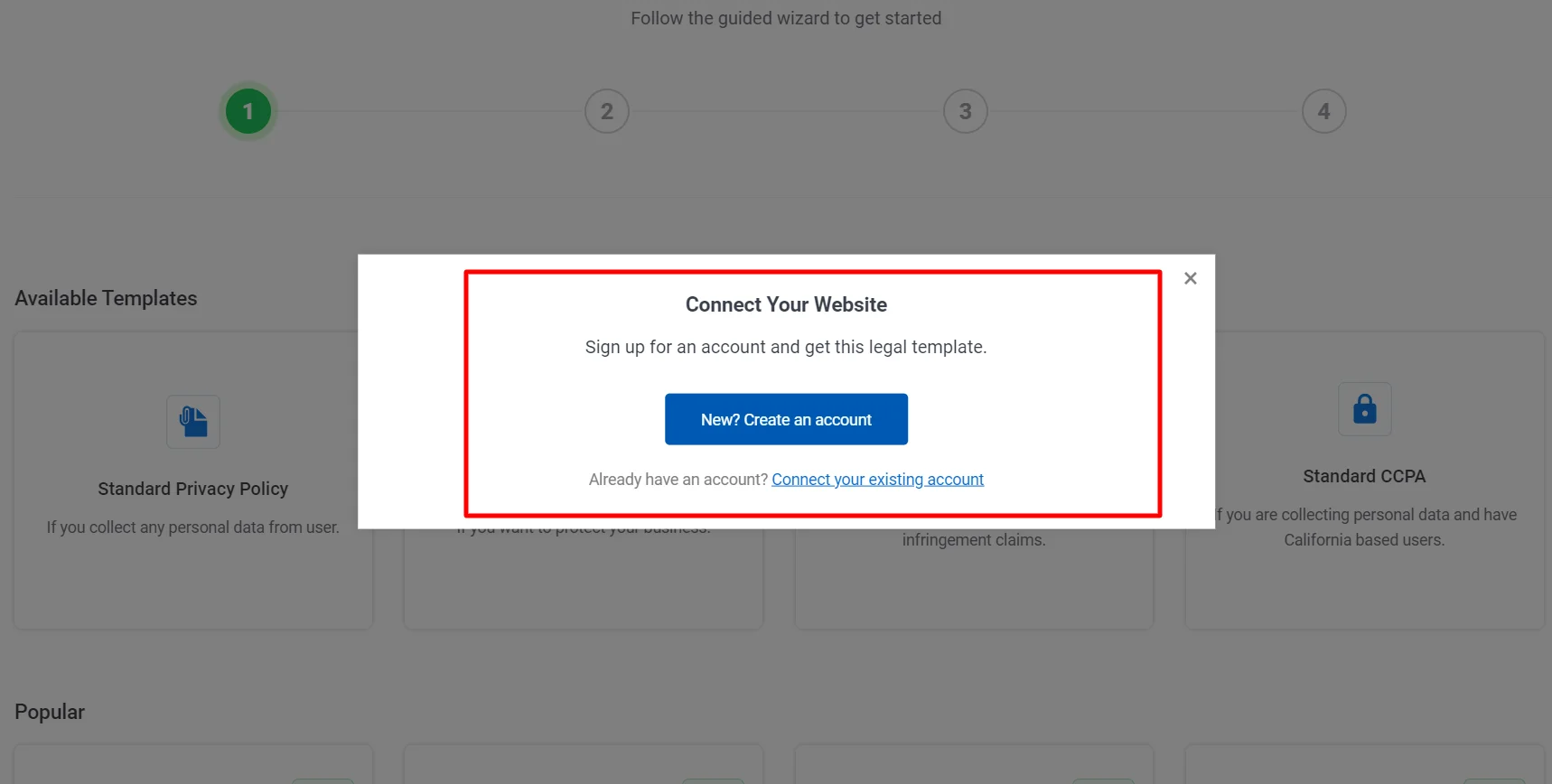
Once you Sign up, your account will automatically connect to your site, and you can start creating legal pages for your website.
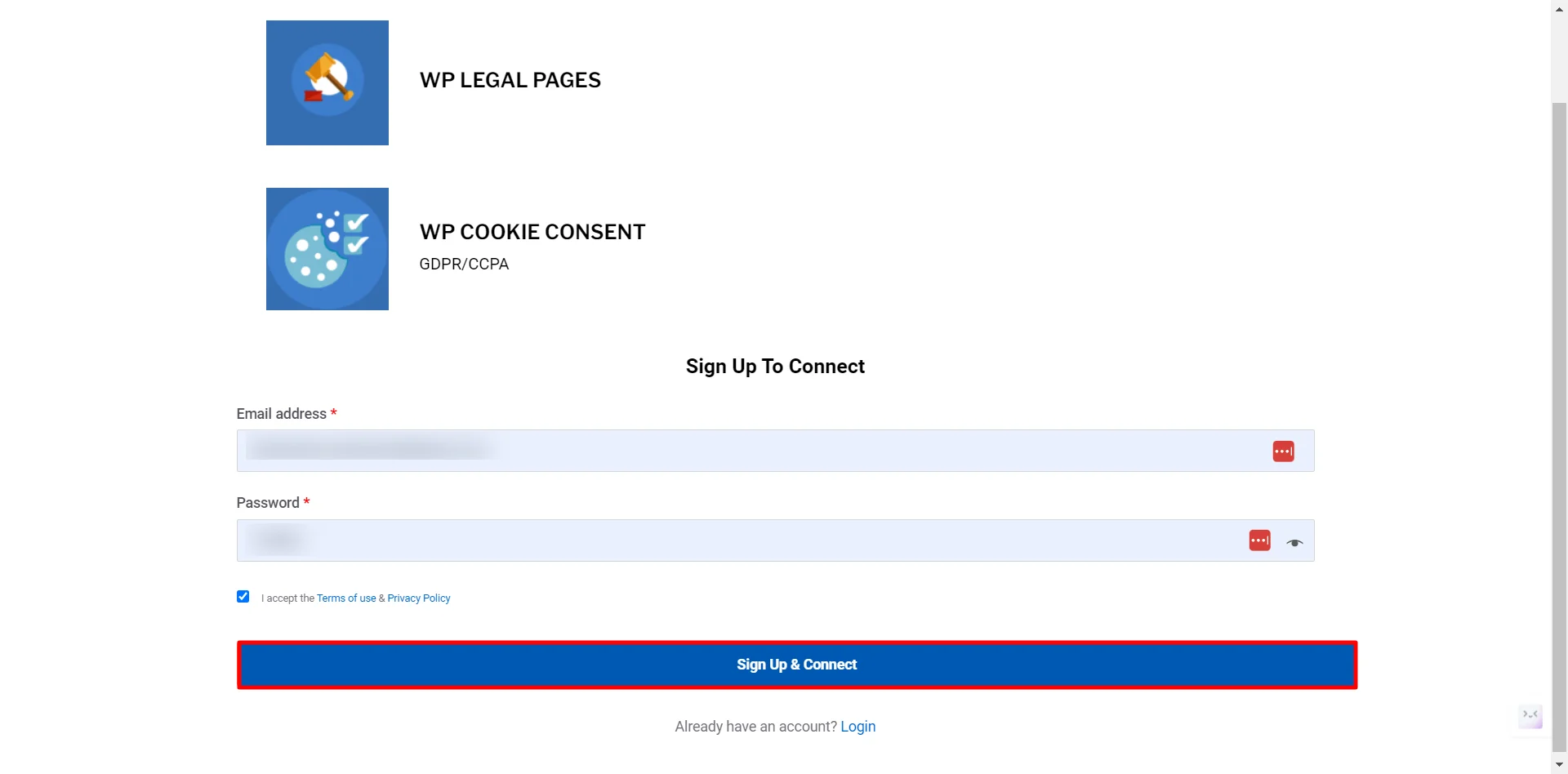
That’s it. You have created an account and can now start creating your website’s Legal Pages. Let’s see how we can create a Return Policy for your websites.
Step 4: Making a Return Policy for Your Website
Below the free template version, you will find the Pro templates available. Click on Returns and Refund Policy to create one for your website.
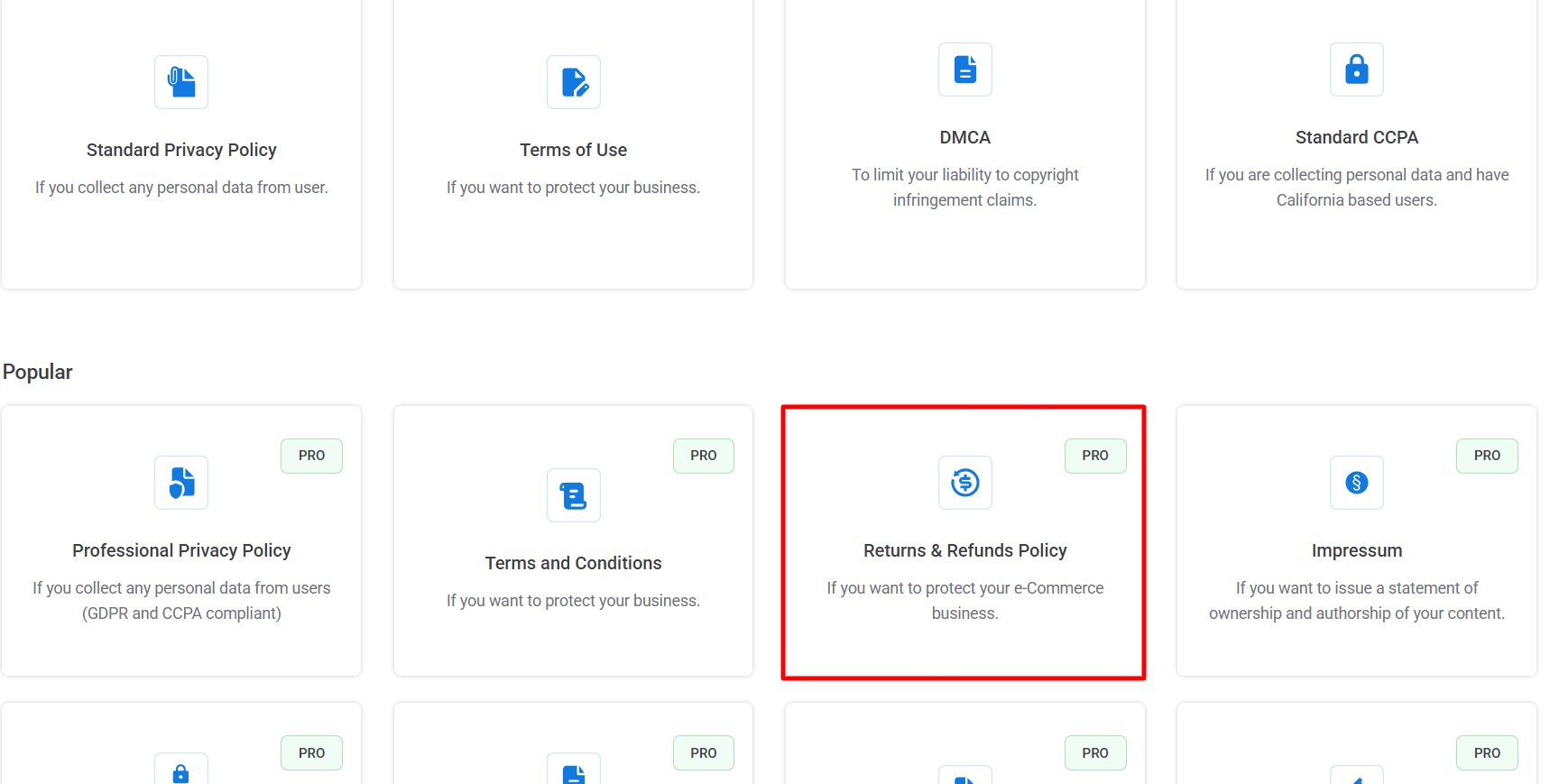
Fill in the Basic Details and click Next.
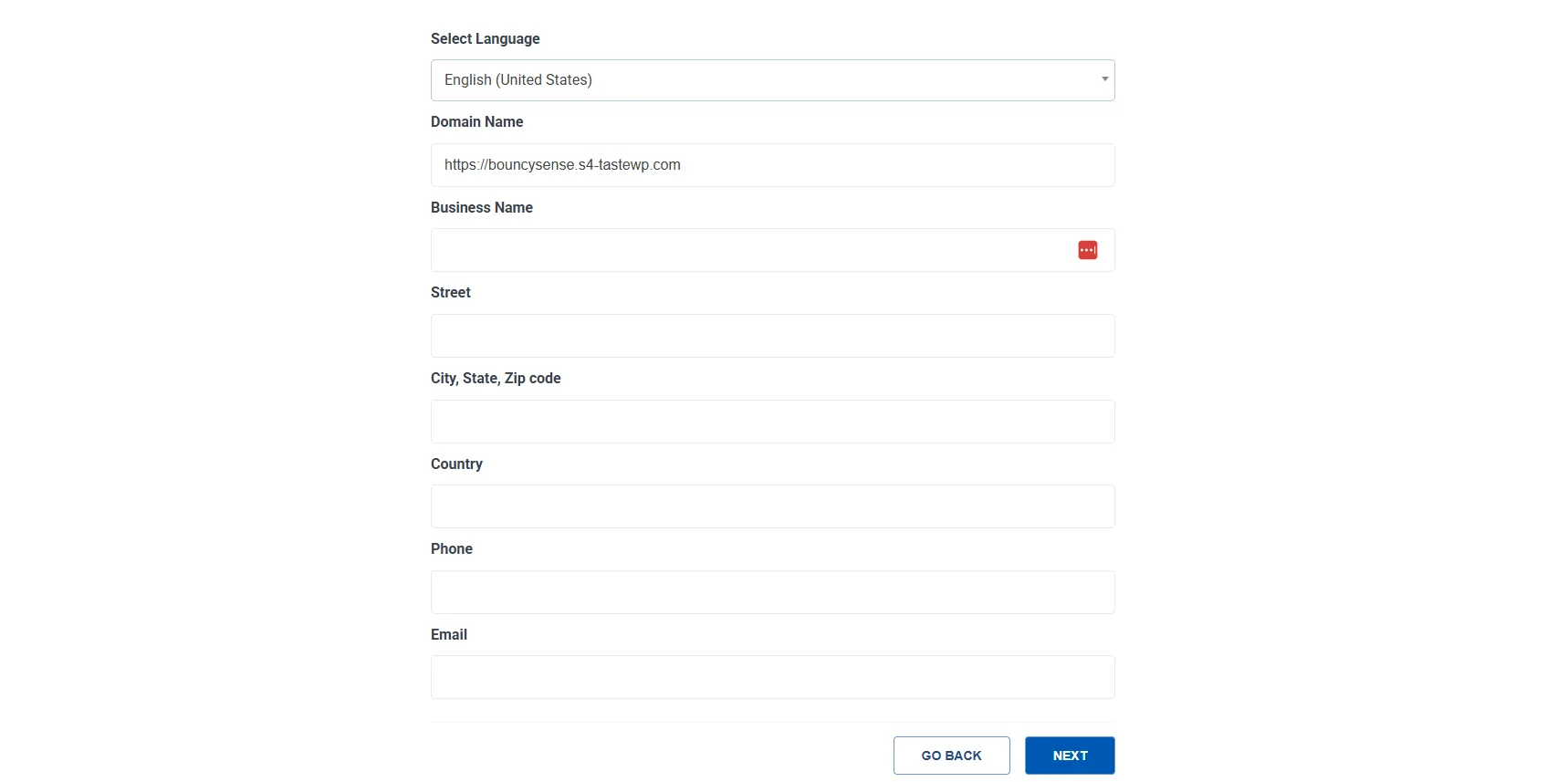
Select the appropriate section for your Return policy, then click Next.
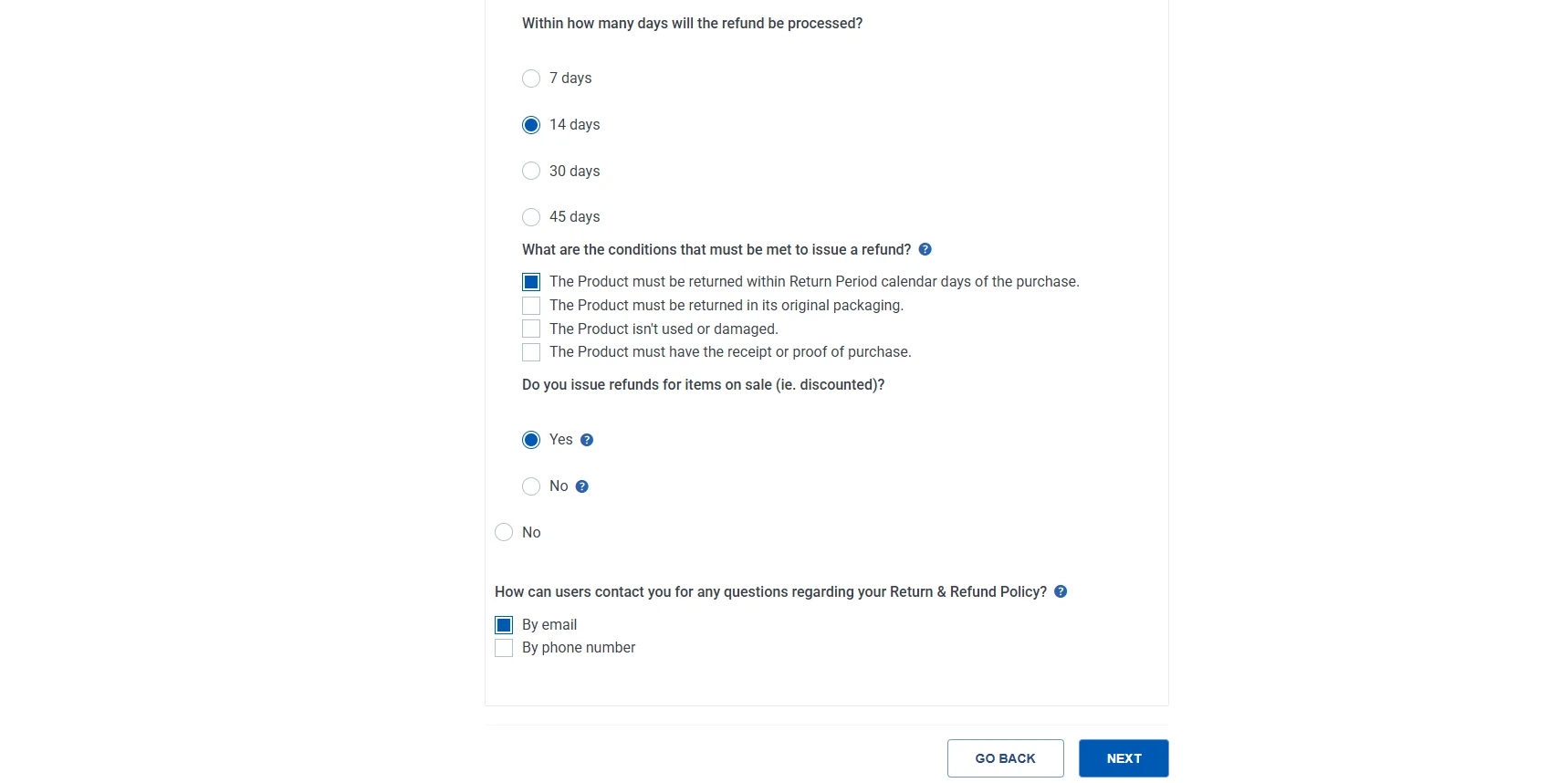
That’s it! Your Return and Refund policy is ready.
Click the Create and Edit option to edit or add additional information to your privacy policy.
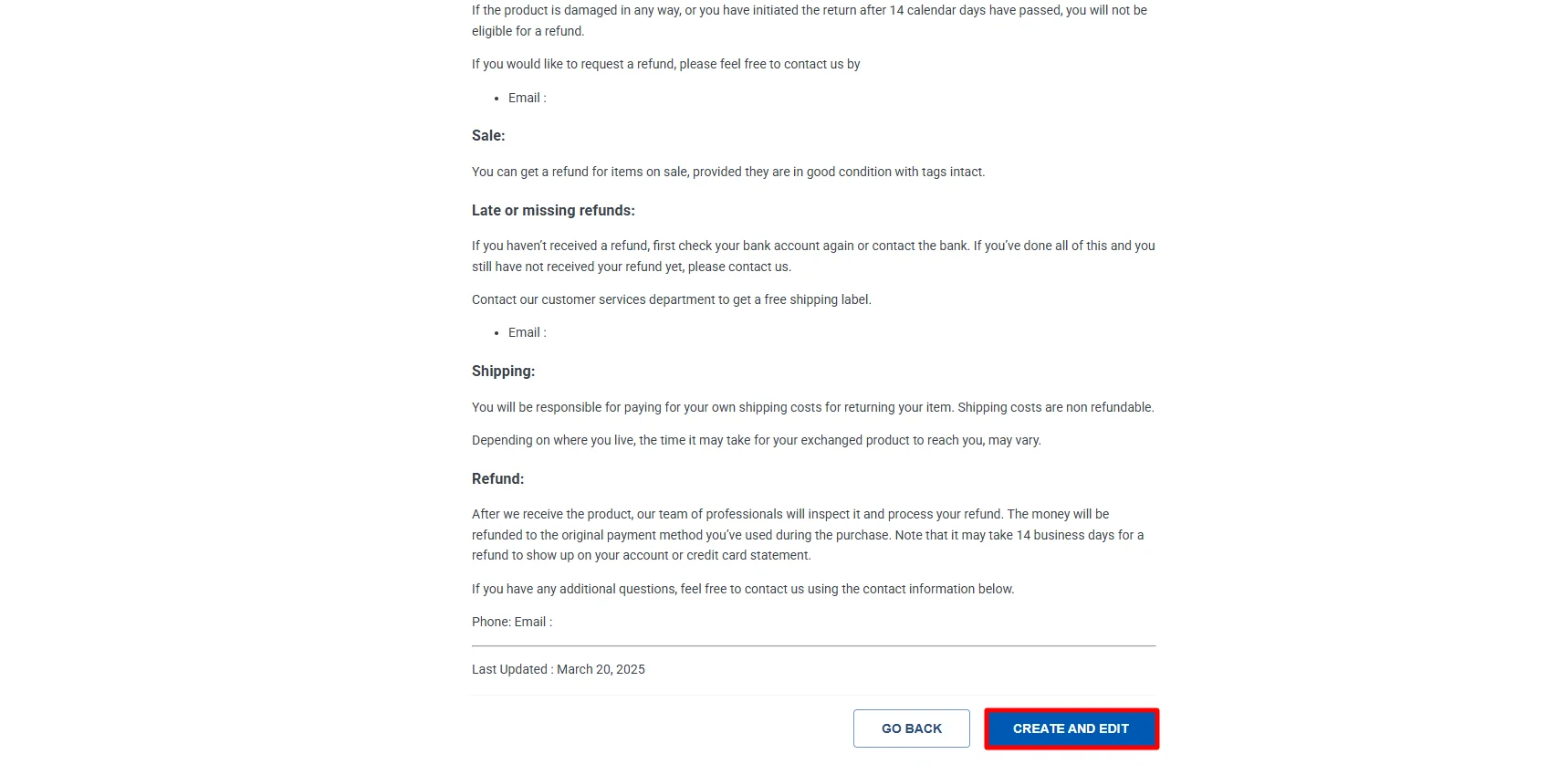
After you have made the necessary changes, click on Publish.
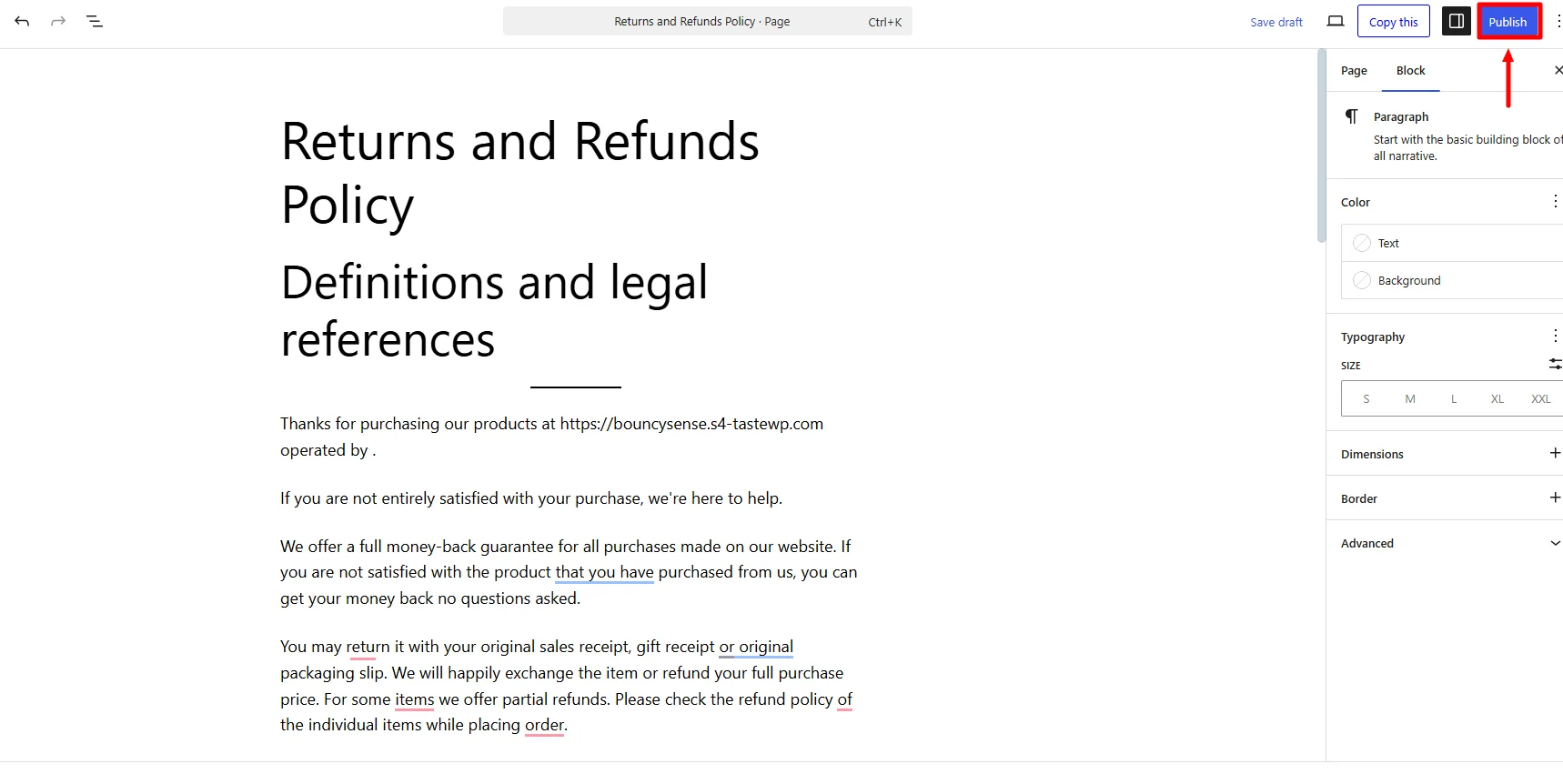
That’s all! Your Return Policy is ready with just a few clicks.
FAQ
To write a return policy for your website, you can use a privacy policy generator to create a return policy for the online store in less than a minute without legal hassle. To create one, you can use the WP Legal Pages Plugin.
Yes, if you run an ecommerce website or sell any digital products on your website. In that case, it is necessary to have a return policy for your customer to adhere to this policy and return their digital products.
To prevent fraudulent returns, your website should have a clear return policy that informs customers. Additionally, implement a customer information verification process and establish rigorous procedures to detect patterns and monitor transactions, possibly using any technology.
Conclusion
Now that you have an excellent guide to writing a return policy for your website, make sure to write it clearly and concisely. Most importantly, it should be simple to understand.
It should tell your customers what items can be returned, when the return window opens, under what conditions, and what specific steps are required to claim a refund.
Place the refund policy in easily visible areas so that every customer is effectively informed about your returns, refund, and exchange processes.
If you found this article informative, you can explore our other published articles:
- How to Create a Privacy Policy For An Educational Website
- What is the TIPA Law? – An Overview of the Tennessee Information Protection Act
- What is Data Processing?- An Ultimate Guide
Want to make a privacy policy for your education website? Grab the WP Legal Pages plugin now!
